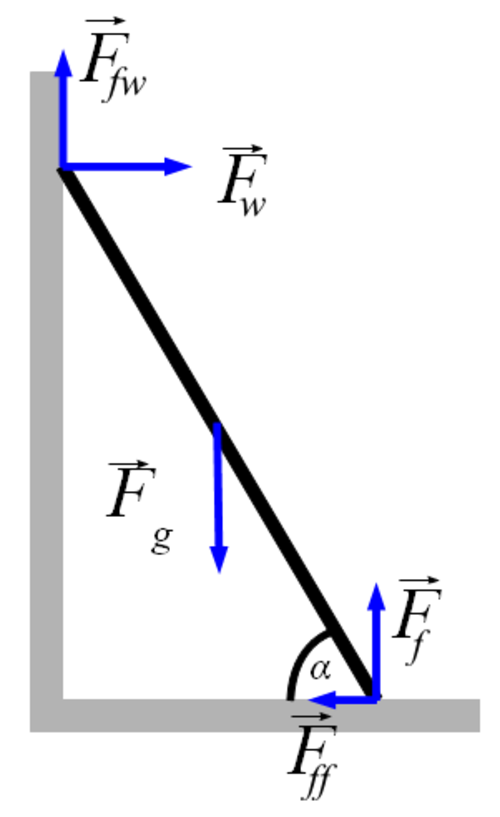A classical mechanics problem by Benyamin Krisna
 A one-dimensional rod with length
L
is resting to a friction-less wall. If the upper end (y-axis) falls down with a constant speed
v
, then find the speed of the other end (x-axis) is leaving the wall when it is
d
from the wall, in m/s
A one-dimensional rod with length
L
is resting to a friction-less wall. If the upper end (y-axis) falls down with a constant speed
v
, then find the speed of the other end (x-axis) is leaving the wall when it is
d
from the wall, in m/s
L = 10 m v = 2 m/s d = 6 m
The answer is 2.67.
This section requires Javascript.
You are seeing this because something didn't load right. We suggest you, (a) try
refreshing the page, (b) enabling javascript if it is disabled on your browser and,
finally, (c)
loading the
non-javascript version of this page
. We're sorry about the hassle.
A simple case of related rates from Calc I:
Let v = dy/dt =2 m/s, L = sqrt(x^2 + y^2) => or y = sqrt(L^2 - x^2). We wish to solve for dx/dt at the pole's bottom, which is achieved by:
dy/dt = dy/dx * dx/dt,
or dx/dt = (dy/dt) / (dy/dx)
where dy/dx = -x/sqrt(L^2 - x^2). Plugging in the supplied values for v, L, and x = d gives dx/dt = 2.667 m/s.